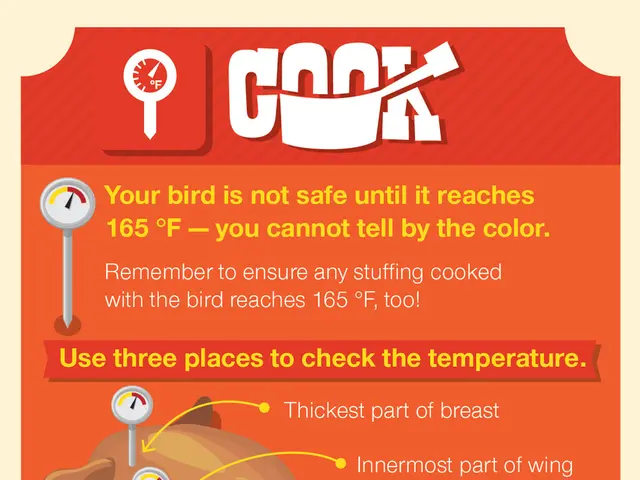Guide for Instructing Yoga for Elevated Blood Pressure: Insights for Educators and Practitioners
Regulating Blood Pressure Through Yoga: Effective Poses and Techniques
Yoga, a centuries-old practice, offers a holistic approach to managing high blood pressure, offering both physical and mental benefits. According to research, certain yoga poses (asanas) and techniques are beneficial and generally safe for individuals managing hypertension.
Our bodies naturally control blood pressure through baroreceptors, sensors in the walls of our blood vessels and the heart that measure pressure. The nervous system uses this information to adjust the heartbeat, blood vessel walls, and kidney function to maintain a healthy blood pressure range. However, sometimes the body's natural responses are not sufficient, and yoga can help enhance these functions.
Yoga Poses for High Blood Pressure
Several yoga poses are considered effective for blood pressure management. These poses, often referred to as restorative, promote relaxation, reduce stress, and improve circulation:
- Shavasana (Corpse Pose): Lie flat on your back, arms and legs relaxed. Focus on slow, deep breathing. This pose decreases muscle tension, calms the mind, and lowers stress, enhancing blood pressure regulation.
- Adho Mukha Svanasana (Downward-Facing Dog): Start on all fours, then lift your hips and straighten your legs, forming an inverted V-shape. This pose improves circulation to the brain and heart, helping relieve stress and reducing heart rate.
- Balasana (Child’s Pose): Kneel and sit back on your heels, then fold forward with your torso resting on your thighs and forehead on the floor. This pose brings a sense of calm to the nervous system and reducing cortisol, aiding blood pressure regulation.
- Vajrasana (Diamond Pose): Sit on your knees with your buttocks resting on your heels. This pose improves blood circulation, reducing stress, and supports heart function.
- Setu Bandhasana (Bridge Pose): Lie on your back, bend your knees, and lift your hips towards the ceiling. This pose strengthens the back and glutes and improves blood circulation, aiding in blood pressure control.
- Paschimottanasana (Seated Forward Bend): Sit with legs extended, inhale to lengthen your spine, then exhale and fold forward over your legs, reaching for your feet or shins. This pose stretches the back and promotes relaxation.
Breathing Techniques and Meditation
Yoga also incorporates specific breathing techniques that help balance the nervous system and support cardiovascular health.
- Anulom Vilom (Alternate Nostril Breathing): This technique encourages a balanced breath for reduced stress and better cardiovascular health.
- Deep Diaphragmatic Breathing: This technique focuses on deep, slow breaths from the abdomen, promoting oxygenation, reducing blood pressure, and supporting heart function.
- Yoga Nidra or Meditation: This practice calms the mind and reduces cortisol, lowering cardiovascular risk and promoting overall health.
Research and Safety
Systematic reviews indicate that yoga can lower elevated blood pressure, especially when practiced regularly alongside standard treatments. The poses and techniques mentioned help lower systolic and diastolic blood pressure, as well as heart rate, particularly in prehypertensive to hypertensive individuals. However, individuals with knee injuries should avoid Balasana, and those with severe hypertension or other comorbidities should consult a healthcare provider before starting a new yoga routine.
In conclusion, incorporating these yoga poses and techniques into one's routine, ideally under the guidance of a qualified yoga instructor, can help individuals manage high blood pressure safely and effectively. Embracing this dynamic practice alongside traditional treatment options may potentially lead to improved overall health outcomes.
Yoga, a centuries-old practice with holistic benefits, is beneficial for individuals managing medical-conditions like chronic-kidney-disease, COPD, type-2-diaboltes, and cance. Certain yoga poses (asanas), such as Shavasana (Corpse Pose), Adho Mukha Svanasana (Downward-Facing Dog), Balasana (Child’s Pose), Vajrasana (Diamond Pose), Setu Bandhasana (Bridge Pose), and Paschimottanasana (Seated Forward Bend), are restorative and improve circulation, reducing stress and promoting relaxation, which is beneficial for maintaining cardiovascular-health.
Yoga also includes specific breathing techniques, like Anulom Vilom (Alternate Nostril Breathing) and Deep Diaphragmatic Breathing, that balance the nervous system, promote oxygenation, and reduce blood pressure. Yoga Nidra or Meditation calms the mind and reduces cortisol, lowering cardiovascular risk and supporting mental-health.
Research suggests that regular practice of these poses and techniques, along with standard treatments, can lower elevated blood pressure, especially in prehypertensive to hypertensive individuals. However, it's important to consult a healthcare provider before starting a new yoga routine, especially for those with severe hypertension or other comorbidities.
Furthermore, practicing yoga can help manage chronic-diseases such as respiratory-conditions and digestive-health issues, while also supporting eye-health, hearing, fitness-and-exercise, and health-and-wellness overall. Autoimmune-disorders like psoriasis and rheumatoid-arthritis may also find benefits from regular yoga practice due to its stress-reducing properties.
In essence, incorporating these yoga poses, techniques, and practices into one's routine can lead to improved overall health outcomes, including better blood pressure regulation, stress management, and heart function. Embracing this ancient practice as part of a comprehensive treatment plan may prove to be a valuable tool in maintaining optimal health and wellness.








